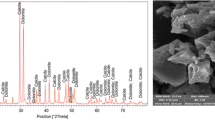Abstract
The feasibility of surfactants for enhancement of extraction efficiencies in wet oil extraction through an acidic hydrothermal process was evaluated. Three different types of surfactants were tested: anionic (SDBS and SDS), cationic (CTAB and MBC), and non-ionic (IGEPAL CA-210 and Tween 60). The total fatty acid content of Chlorella vulgaris was 291.0 mg/g cell. Under the no-surfactant condition, the oil-extraction yield of the acidic hydrothermal extraction was 75.5%. The addition of SDBS and MBC at the 0.4% concentration showed enhanced oil-extraction performance, 85.4 and 85.7% yields, respectively. CTAB and Tween 60 showed low extraction yields, less than 43.0%. SDS and IGEPAL CA-210 showed high oil-extraction yields, higher, in fact, than the initial fatty acid content, due to surfactant partitioning into microalgal oil. With increasing surfactant concentration, the oil-extraction yields of CTAB decreased, those of IGEPAL CA-210 gradually increased, and those of SDBS increased and then decreased again. The best performance, an oil-extraction yield of 95.6%, was observed under the 0.2% SDBS, 120 °C, 1 h condition. Although IGEPAL CA-210 showed the high net oil-extraction yield of 98.3% at the 0.6% surfactant concentration, 61.2% of surfactant was partitioned into oil.

Graphical abstract






Similar content being viewed by others
References
Mata, T. M., Martins, A. A., & Caetano, N. S. (2010). Microalgae for biodiesel production and other applications: A review. Bioresource Technology, 14, 217–232.
Fu, C. C., Hung, T. C., Chen, J. Y., Su, C. H., & Wu, W. T. (2010). Hydrolysis of microalgae cell walls for production of reducing sugar and lipid extraction. Bioresource Technology, 100, 8750–8754.
Chisti, Y. (2007). Biodiesel from microalgae. Biotechnology Advances, 25(3), 294–306.
Hossain, A. B. M. S., Salleh, A., Boyce, A. N., Chowdhury, P., & Naqiuddin, M. (2008). Biodiesel fuel production from algae as renewable energy. American Journal of Biochemistry and Biotechnology, 4, 250–254.
Hu, Q., Sommerfeld, M., Jarvis, E., Ghirardi, M., Posewitz, M., & Seibert, M. (2008). Microalgal triacylglycerols as feedstocks for biofuels production: perspectives and advances. Plant Journal, 54(4), 621–639.
Li, Q., Du, W., & Liu, D. (2008). Perspectives of microbial oils for biodiesel production. Applied Microbiology and Biotechnology, 80(5), 749–756.
Shin, H. J., Park, J. H., Jung, W. K., Cho, H., & Kim, S. W. (2011). Development of biorefinery process using microalgae. Journal of Korean Society for Precision Engineering, 28, 154–167.
Halim, R., Danquah, M. K., & Webley, P. A. (2012). Extraction of oil from microalgae of biodiesel production: A review. Biotechnology Advances, 30(3), 709–732.
Lee, Y. C., Huh, Y. S., Farooq, W., Han, J. I., Oh, Y. K., & Park, J. Y. (2013). Oil extraction by aminoparticle-based H2O2 activation via wet microalgae harvesting. RSC Advances, 3, 12802–12809.
Park, J. Y., Oh, Y. K., Lee, J. S., Lee, K., Jeong, M. J., & Choi, S. A. (2014). Acid-catalyzed hot-water extraction of lipids from Chlorella vulgaris. Bioresource Technology, 153, 408–412.
Mazza, G. (1988). Lipid content and fatty acid composition of buckwheat seed. Cereal Chemistry, 65, 122–126.
Prabhakara, R. P. G., Balaswamy, K., Narsing, R. G., Jyothirmayi, T., Karuna, M. S. L., & Prasad, R. B. N. (2013). Lipid classes, fatty acid and phospholipid composition of roe lipids from Catla catla and Cirrhinus mrigala. International Food Research Journal, 20, 275–279.
Huerga, I. R., Zanuttini, M. S., Gross, M. S., & Querini, C. A. (2014). Biodiesel production from Jatropha curcas: Integrated process optimization. Energy Conversion and Management, 80, 1–9.
Li, Y., & McClements, D. J. (2011). Inhibition of lipase-catalyzed hydrolysis of emulsified triglyceride oils by low-molecular weight surfactants under simulated gastrointestinal conditions. European Journal of Pharmaceutics and Biopharmaceutics, 79(2), 423–431.
Park, J. Y., Kim, D. G., Wang, Z. M., Lee, J. P., Park, S. C., & Lee, J. S. (2008). Production of biodiesel from soapstock using an ion-exchange resin catalyst. Korean Journal of Chemical Engineering, 25(6), 1350–1354.
Park, J. Y., Nam, B., Choi, S. A., Oh, Y. K., & Lee, J. S. (2014). Effects of anionic surfactant on extraction of free fatty acid from Chlorella vulgaris. Bioresource Technology, 166, 620–624.
Do, L. D., & Sabatini, D. A. (2010). Aqueous extended-surfactant based method for vegetable oil extraction: Proof of concept. JAOCS, 87, 1211–1220.
Yang, K., Zhu, L., & Xing, B. (2006). Enhanced soil washing of phenanthrene by mixed solutions of TX100 and SDS. Environmental Science & Technology, 40, 4274–4280.
Zhao, B., Zhu, L., & Gao, Y. (2005). A novel solubilization of phenanthrene using Winsor I microemulsion-based sodium castor oil sulfate. Journal of Hazardous Materials B, 119, 205–211.
Chang, M. C., Huang, C. R., & Shu, H. Y. (2000). Effects of surfactants on extraction of phenanthrene in spiked sand. Chemosphere, 41(8), 1295–1300.
Reddy, K. R., Ala, P. R., Sharma, S., & Kumar, S. N. (2006). Enhanced electrokinetic remediation of contaminated manufactured gas plant soil. Engineering Geology, 85, 132–146.
Velmurugan, S., Babuponnusami, A., Gopinath, K. P., & Kumar, B. S. M. (2013). Studies on solvent selection in extraction of oil from waste mud. International Journal of Chemical Sciences, 11, 546–552.
Javadi, A., Mucic, N., Vollhardt, D., Fainerman, V. B., & Miller, R. (2010). Effects of dodecanol on the adsorption kinetics of SDS at the water–hexane interface. Journal of Colloid and Interface Science, 351(2), 537–541.
Moldoveanu, S., & David, V. (2015). Chapter 5 – Phase transfer in sample preparation. Modern Sample Preparation for Chromatography. Part II, 105-130.
Wu, J., Xu, Y., Dabros, T., & Hamza, H. (2004). Development of a method for measurement of relative solubility of nonionic surfactants. Colloids and Surfaces A: Physicochemical and Engineering Aspects, 232, 229–237.
Liu, J., Zhu, Y., Tao, Y., Zhang, Y., Li, A., Li, T., Sang, M., & Zhang, C. (2013). Freshwater microalgae harvested via flocculation induced by pH decrease. Biotechnology for Biofuels, 6, 1–11.
Sein, A., & Engberts, J. B. F. N. (1995). Micelle to lamellar aggregate transition of an anionic surfactant in dilute aqueous solution induced by alkali metal chloride and tetraalkylammonium chloride salts. Langmuir, 11(2), 455–465.
Befkadu, A. A., & Quanyuan, C. (2018). Surfactant-enhanced soil washing for removal of petroleum hydrocarbons from contaminated soils: A review. Pedosphere, 28(3), 383–410.
Horozov, T., & Arnaudov, L. (2000). Adsorption kinetics of some polyethylene glycol octylphenyl ethers studied by the fast formed drop technique. Journal of Colloid and Interface Science, 222(1), 146–155.
Funding
This research was supported by the Global Infrastructure Program through the National Research Foundation of Korea (NRF) funded by the Ministry of Science and ICT (No. NRF-2018K1A3A1A61024274).
Author information
Authors and Affiliations
Corresponding author
Ethics declarations
Conflict of Interest
The authors declare that they have no conflict of interest.
Ethical Approval
This article does not contain any studies with human participants or animals performed by any of the authors.
Informed consent
Informed consent was obtained from all participants included in the study.
Additional information
Publisher’s Note
Springer Nature remains neutral with regard to jurisdictional claims in published maps and institutional affiliations.
Highlights
• Extraction of microalgal oil by surfactant-assisted acidic hydrothermal process
• Partitioning of SDS and IGEPAL CA-20 into microalgal oil due to hexane affinity
• High oil-extraction yield of SDBS with good phase-separation performance
Electronic supplementary material
ESM 1
(DOCX 129 kb)
Rights and permissions
About this article
Cite this article
Park, JY., Kim, MC., Nam, B. et al. Behavior of Surfactants in Oil Extraction by Surfactant-Assisted Acidic Hydrothermal Process from Chlorella vulgaris. Appl Biochem Biotechnol 193, 319–334 (2021). https://doi.org/10.1007/s12010-020-03426-3
Received:
Accepted:
Published:
Issue Date:
DOI: https://doi.org/10.1007/s12010-020-03426-3




